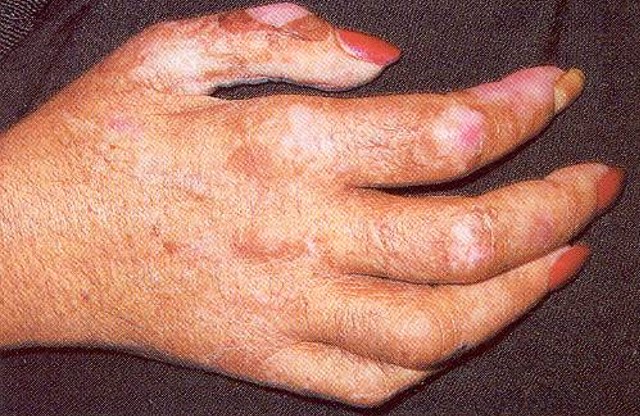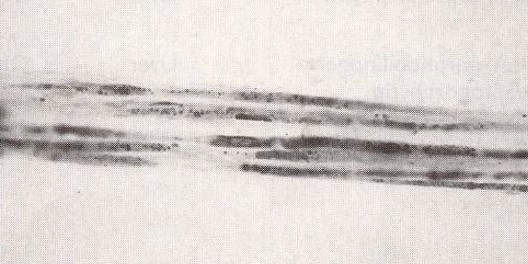Medical Mystery of the Week
You are asked to make a diagnosis in a 57-year-old woman who was transferred
to your service because of the acute onset of severe abdominal pain following bariatric
surgery. In addition to rebouind abdominal tenderness, you note that her skin is discolored
(see photo, below) and that, on neurologic examination, she has a motor polyneuropathy.
DIAGNOSIS: Variegate porphyria.
Variegate porphyria (VP) should be considered in any patient with episodes of
unexplained abdominal or pelvic pain, blistering skin lesions, and/or a motor polyneuropathy,
particuilarly if the symptoms are worsened by the administration of sulfonamides,
barbiturates, or hydrantoins. The diagnosis can be confirmed by demonstrating a red
fluorescence of the urine or stool under a Wood's lamp, and by measuring blood, urine
and stool levels of porphyrins and aminolevulinic acid dehydratase (blood) and 5-aminolevulinic
acid (urine). Intravenous administration of heme is the treatment of choice.


The most common manifestation o VP is the adult onset of blistering skin lesions in sun exposed areas, particularly the hands and face (top image). A nerve biopsy taken from a patient with VP showing axonal degeneration (bottom image). In VP muscle weakness may progress to quadriparesis and respiratory paralysis. Autonomic system neuropathy may also occur. Neurovisceral symptoms may occur at any time after puberty but are relatively rare in the elderly.
To get MMW analytics, copy and paste this address on your Web site: https://datastudio.google.com/reporting/1oepsgnH8g5rghgmo0LQh2d9EQBE9IRND
 Water Leak Investigation and ...
Water Leak Investigation and ...